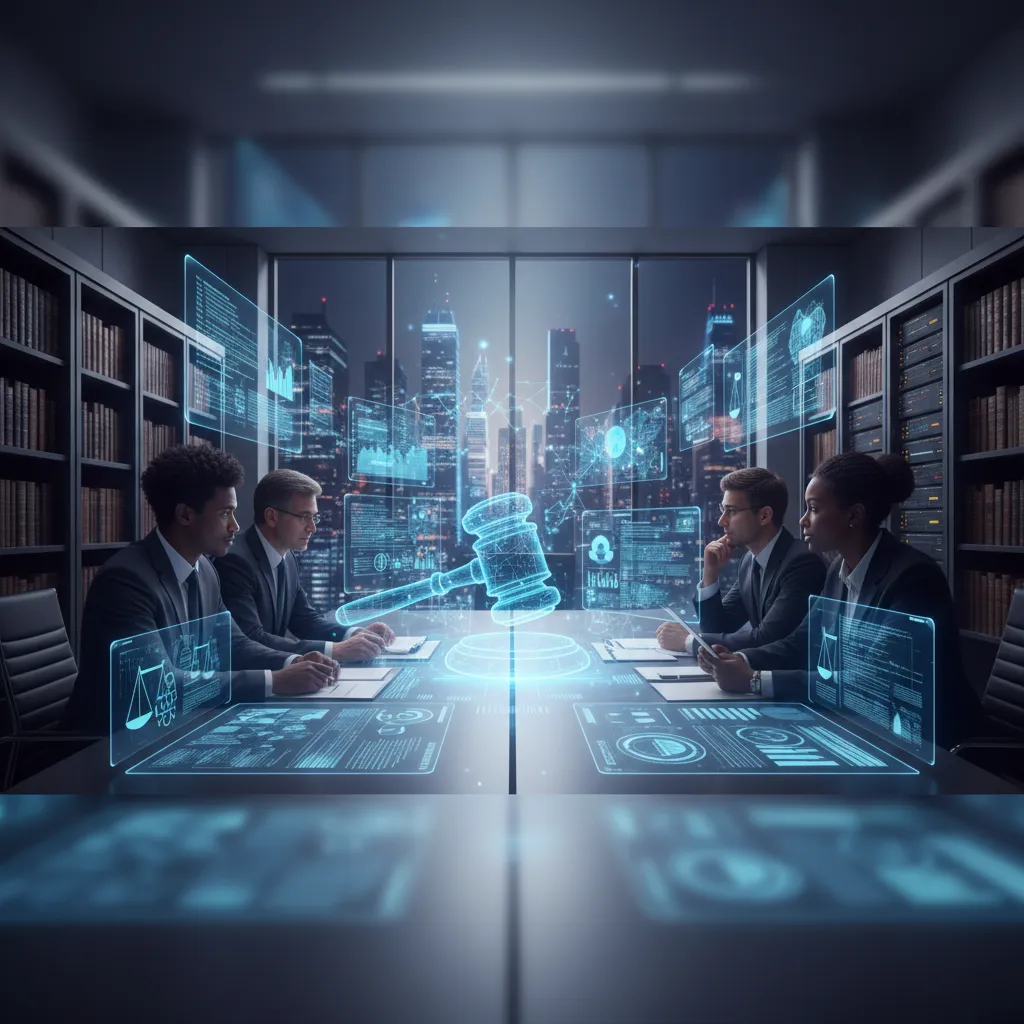AI and the Law: How Artificial Intelligence is Changing Legal Systems
Artificial Intelligence (AI) is no longer a futuristic concept confined to science fiction. It has become a transformative force across industries, and one of the most intriguing areas of its impact is the legal system. From automating routine tasks to reshaping how justice is delivered, AI is redefining the relationship between technology and law. This article explores the evolution, applications, challenges, and future of AI in legal systems worldwide.

Early Encounters Between Law and Technology
In the early days of computing, the legal profession was slow to adopt technology. Lawyers relied heavily on paper-based systems, and the idea of using machines to interpret or apply the law seemed far-fetched. However, the introduction of digital databases in the 1970s and 1980s marked the first step toward technological integration. Tools like LexisNexis and Westlaw allowed lawyers to conduct legal research more efficiently.
These early systems were not powered by Artificial Intelligence but laid the groundwork for future innovations. They demonstrated that technology could enhance legal practice by reducing time spent on repetitive tasks. This period can be seen as the foundation upon which AI would later build.
The Rise of Legal Research Automation
By the 1990s and early 2000s, advancements in machine learning and natural language processing began to influence legal research. AI-powered search engines could analyze case law, statutes, and regulations with greater accuracy. Instead of manually sifting through thousands of documents, lawyers could now rely on algorithms to identify relevant precedents.
For example, predictive coding emerged as a powerful tool in e-discovery, enabling attorneys to quickly identify relevant documents in litigation. This not only saved time but also reduced costs for clients. The rise of automation in legal research marked a turning point, showing that AI could handle complex legal data.
AI in Contract Analysis and Drafting
One of the most significant applications of AI in law has been in contract analysis. AI platforms can now review thousands of contracts in minutes, identifying risks, inconsistencies, and missing clauses. This is particularly valuable in mergers and acquisitions, where due diligence requires reviewing vast amounts of documentation.
AI tools such as Kira Systems and LawGeex use machine learning to compare contracts against standard templates, flagging unusual terms. Beyond analysis, AI is also being used to draft contracts, generating standard agreements with minimal human input. This reduces errors and ensures compliance with legal standards.
Benefits of AI in Contract Management
- Speed: Contracts that once took weeks to review can now be analyzed in hours.
- Accuracy: AI reduces human error by identifying overlooked clauses.
- Cost-efficiency: Clients save money by reducing billable hours spent on routine reviews.
Predictive Analytics in Litigation
AI has also entered the courtroom through predictive analytics. By analyzing historical case data, AI can forecast the likely outcome of litigation. For instance, algorithms can predict how a judge might rule based on past decisions or estimate the probability of success in appeals.
These tools empower lawyers to make more informed decisions about whether to settle or proceed to trial. While not infallible, predictive analytics provides valuable insights that were previously unavailable. This represents a shift from reactive to proactive legal strategy.
Example of Predictive Tools
Platforms like Lex Machina and Premonition analyze millions of court records to identify patterns in judicial behavior. Such tools give law firms a competitive edge by offering data-driven litigation strategies.
AI in Judicial Decision-Making
Perhaps the most controversial application of AI in law is its use in judicial decision-making. Some jurisdictions have experimented with AI systems to assist judges in sentencing or bail decisions. These systems analyze risk factors, such as the likelihood of reoffending, to recommend appropriate outcomes.
While proponents argue that AI can reduce bias and increase consistency, critics warn of the dangers of algorithmic bias. If the data used to train these systems reflects existing inequalities, the AI may perpetuate or even amplify them. This raises profound ethical and legal questions about the role of AI in justice.
Ethical and Legal Challenges of AI in Law
The integration of AI into legal systems is not without challenges. One major concern is transparency. Many AI algorithms operate as "black boxes," making it difficult to understand how decisions are reached. This lack of transparency is problematic in a field where accountability is paramount.
Another issue is bias. AI systems trained on biased data may produce discriminatory outcomes. For example, risk assessment tools in criminal justice have been criticized for disproportionately affecting minority communities. Addressing these challenges requires careful oversight and regulation.
Key Ethical Concerns
- Accountability: Who is responsible if an AI system makes an error?
- Fairness: How can we ensure AI does not reinforce systemic biases?
- Privacy: How should sensitive legal data be protected from misuse?
AI and Access to Justice
One of the most promising aspects of AI in law is its potential to improve access to justice. Many individuals cannot afford legal representation, leaving them vulnerable in disputes. AI-powered chatbots and virtual assistants are helping bridge this gap by providing basic legal advice at little or no cost.
For example, platforms like DoNotPay use AI to help users contest parking tickets or navigate small claims court. While these tools cannot replace human lawyers in complex cases, they democratize access to legal resources for underserved populations.
Regulation of AI in Legal Systems
As AI becomes more integrated into law, governments and professional bodies are grappling with how to regulate its use. The European Union has proposed the AI Act, which categorizes AI applications by risk level and imposes strict requirements on high-risk systems, including those used in legal contexts.
In the United States, the American Bar Association has issued guidelines on the ethical use of AI in legal practice. These regulations aim to balance innovation with accountability, ensuring that AI enhances rather than undermines the rule of law.
Examples of Regulatory Approaches
- EU AI Act: Focuses on risk-based regulation.
- ABA Guidelines: Emphasize ethical responsibility of lawyers using AI.
- National Initiatives: Countries like China and Canada are developing their own frameworks.
The Future of AI in Legal Education and Practice
AI is not only changing how law is practiced but also how it is taught. Law schools are beginning to incorporate courses on legal technology, preparing future lawyers to work alongside AI. Understanding how to use AI tools effectively will become a core competency for legal professionals.
In practice, AI is likely to handle more routine tasks, freeing lawyers to focus on strategy, advocacy, and client relationships. Rather than replacing lawyers, AI will augment their capabilities, creating a new model of legal practice that blends human judgment with machine efficiency.
Long-Term Implications: AI and the Rule of Law
Looking ahead, the integration of AI into legal systems raises profound questions about the future of justice. Will AI make the law more accessible, consistent, and fair? Or will it introduce new forms of inequality and opacity? The answer depends on how societies choose to regulate and deploy these technologies.
Ultimately, the challenge is to ensure that AI serves the principles of the rule of law: fairness, accountability, and transparency. If used responsibly, AI has the potential to strengthen legal systems and expand access to justice worldwide.
Conclusion
The relationship between AI and the law is complex and evolving. From early research tools to predictive analytics and judicial decision-making, AI is reshaping every aspect of legal systems. While challenges such as bias, transparency, and regulation remain, the potential benefits are immense. By embracing innovation while safeguarding ethical principles, societies can harness AI to create more efficient, accessible, and just legal systems. The future of law will not be written by humans alone but co-authored with intelligent machines.











